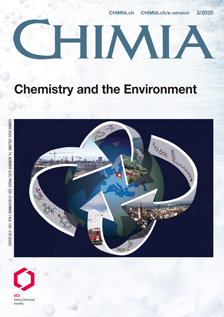Behavior of Glyphosate in Wastewater Treatment Plants
DOI:
https://doi.org/10.2533/chimia.2020.156PMID:
32197674Keywords:
Activated sludge, Adsorption, Glyphosate, Wastewater treatmentAbstract
The herbicide glyphosate is frequently detected in surface waters and its occurrence is linked to agricultural as well as urban uses. Elevated concentrations downstream of wastewater treatment plants (WWTPs) suggest that municipal wastewater is an important source of glyphosate in surface waters. We therefore conducted a study at a typical municipal WWTP in Switzerland to characterize the seasonality of glyphosate occurrence, the removal efficiency, and the processes involved in glyphosate removal. Glyphosate was present in raw (mechanically treated) wastewater during the whole study period (April to November). A lab incubation experiment with activated sludge indicated negligible degradation of glyphosate. Lack of degradation combined with strong adsorption lead to substantial enrichment of the compound in the sludge. Due to this enrichment and the long residence time of activated sludge (several days, compared to hours for wastewater itself), concentrations in treated wastewater show comparatively little variation, whereas concentrations in raw wastewater may fluctuate considerably. Overall removal efficiencies were in the range of 71–96%. This behavior could be described qualitatively using a numerical model that included input of glyphosate via raw wastewater, adsorption to activated sludge, and export via treated wastewater and excess sludge, but excluded degradation processes.Downloads
Published
2020-03-25
Issue
Section
Scientific Articles
License
Copyright (c) 2020 Thomas Poiger, Martina Keller, Ignaz J. Buerge, Marianne E. Balmer

This work is licensed under a Creative Commons Attribution-NonCommercial 4.0 International License.
How to Cite
[1]
T. Poiger, M. Keller, I. J. Buerge, M. E. Balmer, Chimia 2020, 74, 156, DOI: 10.2533/chimia.2020.156.







